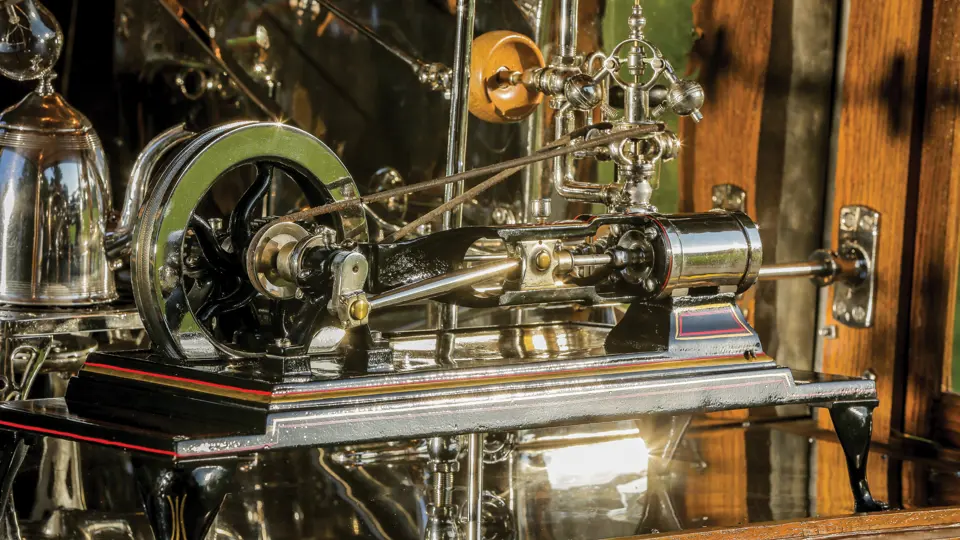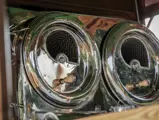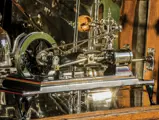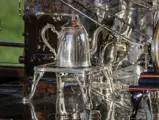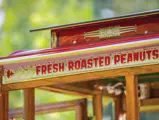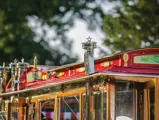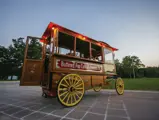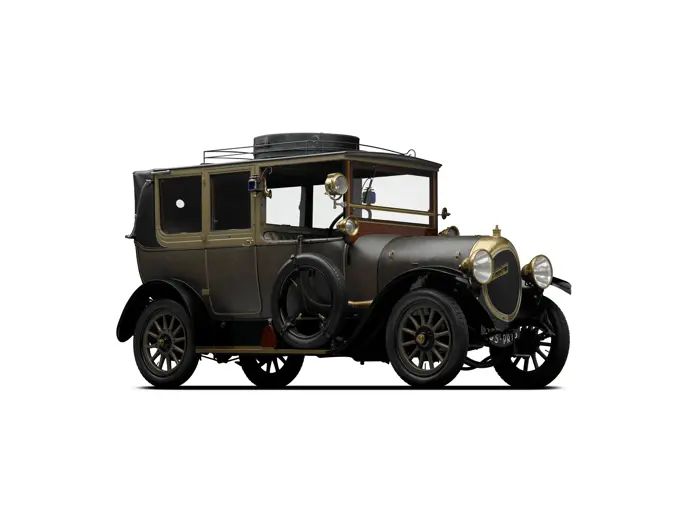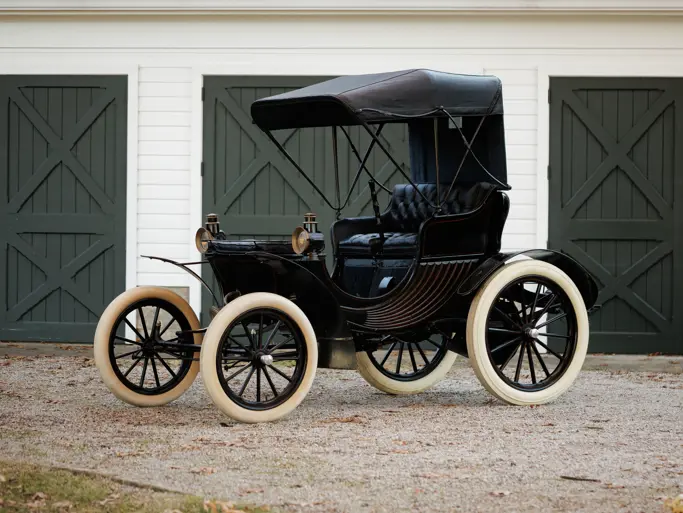One-horse propulsion, solid axles with transverse full-elliptic leaf-spring front suspension, and longitudinal full-elliptic rear leaf springs. Wheelbase: 100.5 in.
Charles “Fred” Dunbar was a skilled machinist. In the late 1800s, he went to work for Charles Cretors in Chicago, Illinois, as a head machinist. Cretors, the inventor of a steam corn-popping machine and a showman at heart, was having great success with a wagon that incorporated his popping and peanut roasting machinery with a small steam engine. Children and adults alike were transfixed, and sales were immense.
As time went on, Dunbar and Cretors more and more frequently came into conflict, as each possessed a strong personality. Mr. Cretors’ son was able to intercede in many cases, but in 1902, when it came out that Fred Dunbar was developing a hot-air corn popper, the gloves came off. Dunbar was summarily sent packing.
Undaunted, Fred Dunbar moved down the street from his former boss and continued to work under the shingle of Dunbar & Company. When Cretors moved to another location the following year, Dunbar took over his old quarters. Over the next few years, Dunbar advertised not only popcorn equipment, but also gas lighting for homes and even automotive work, although the latter is believed to have involved just a few cars built to customer order. The firm also repaired and rebuilt a number of automobiles around 1904. The centennial history of Cretors that was published in 1985 acknowledges that the loss of Fred Dunbar set the company back many years.
Dunbar’s air popping, however, proved to be advantageous for producing large quantities of popcorn in anticipation of future sales. The corn emerged from the popper dry, and it was kept fresh longer. A special Dunbar-patented automatic buttering devise buttered the popcorn as the customer purchased it. Thus, it became the favored method for locations such as movie houses and fairs, and they experienced surges of sales. Snack foods were neither as prevalent nor as varied as today, so Dunbar and Cretors competed fiercely during the first half of the 20th century. Both companies survive today: Cretors manufactures equipment for the production and preparation of a large variety of hot and cold snack foods, while Dunbar Manufacturing maintains a substantial business in air poppers of Fred Dunbar’s 1900 principle, which are now made from stainless steel.
Offered here is the only known restored Model 1200 Dunbar Popcorn Wagon with correct interior and exterior and original steam-operating equipment to survive. Nine others are extant, but they have either been extensively modified, with their steam equipment being removed and replaced with modern poppers, or they have been fitted with balloon tires or mounted on automobile chassis for greater mobility. This unit has had but three owners in 34 years. From 1979 to 2001, when it was purchased by the current owner, it remained in Cedar Rapids, Iowa.
Following acquisition, the current owner submitted it to a full and comprehensive restoration over a period of 12 years, with much historical assistance from Dunbar experts Bruce and Darlene Anderson. The restoration was undertaken with the cooperation of craftsmen at Anderson Restoration and Jordan Engineering, as well as Mark Owens, Denny Farrington, Antique Service Center, Jerry Sweet, and Owen Franks.
A complete set of engineering drawings was made, from an original machine in some cases, to aid in the restoration and fabrication of missing parts. The Wagon was completely stripped and correctly refinished in natural varnished oak, inside and out. The ceiling is done in green with yellow, red, and gold ornamentation. It has the characteristic Dunbar-vaulted roof over the front section, which houses twin air poppers on the left and the steam engine across the front. The engine is mounted behind glass and at eye level, to catch and hold the attention of children. The engine, piping, and accessories are polished nickel plate, while the vending windows slide down in tracks to allow complete open-air access. The equipment is correct and complete, including the Dunbar buttering device, which was patented on November 26, 1907.
The wheels and undercarriage are painted in bright yellow, and the roof exterior is painted in handsome maroon. The engineering drawings from the restoration and a color reprint of the illustrated factory catalogue are included in the sale, as well as photos of the restoration and a one-horse hitch. Fully functional and operational, this rare Model D Dunbar Popcorn Wagon is ideal for display at a parade or carnival.
Hey, step right up and get your fresh roasted peanuts and popcorn!
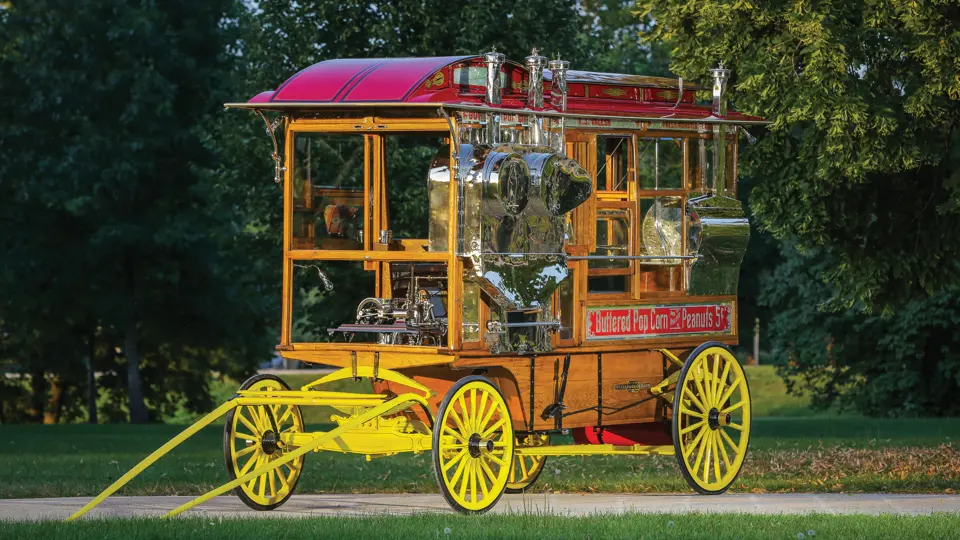



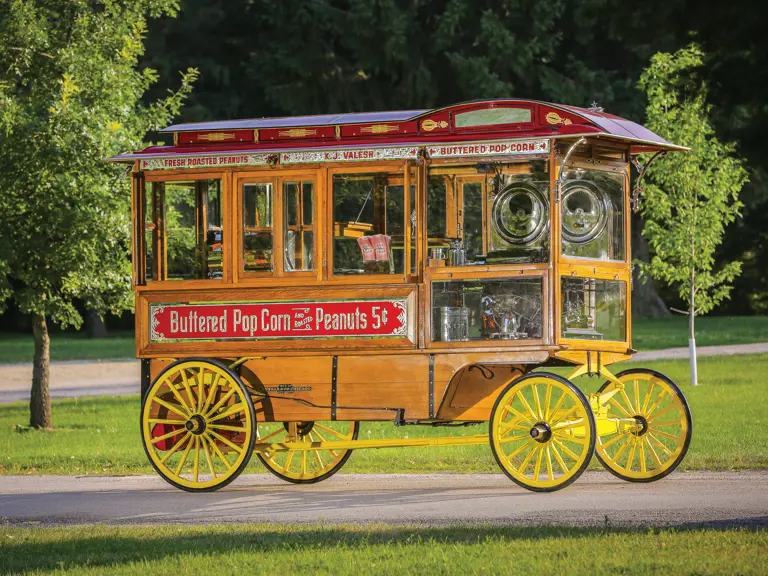
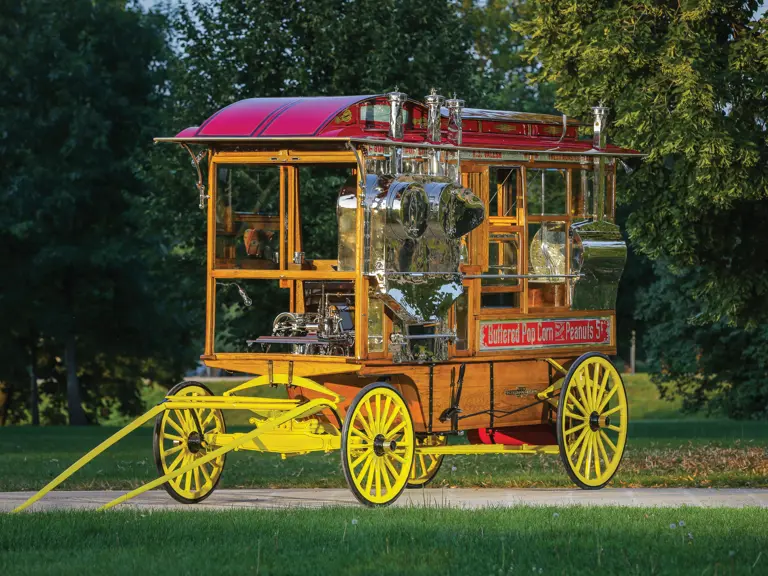
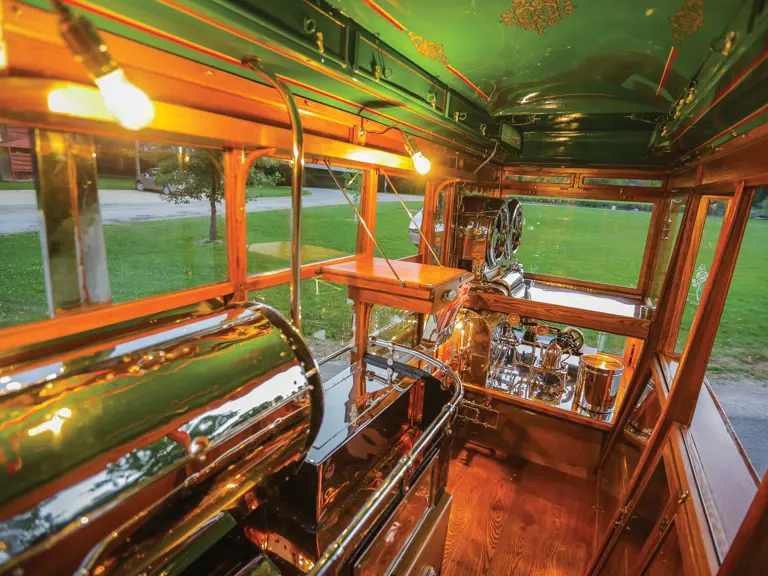
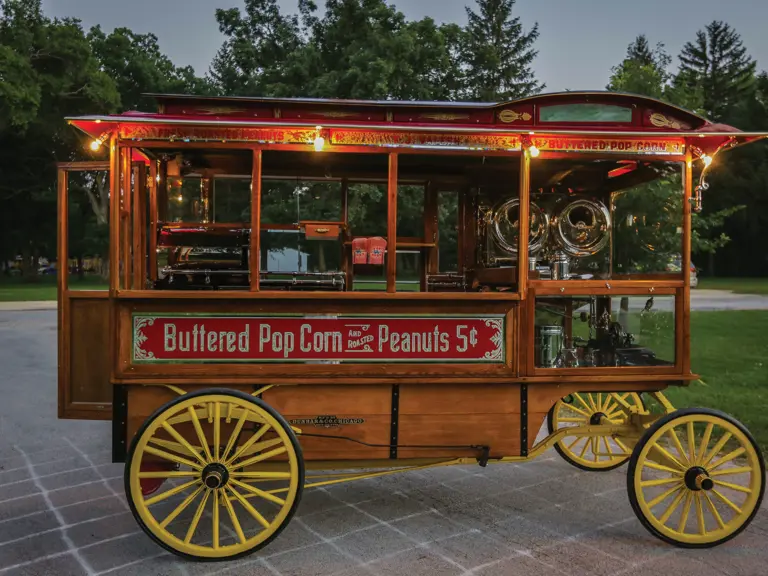
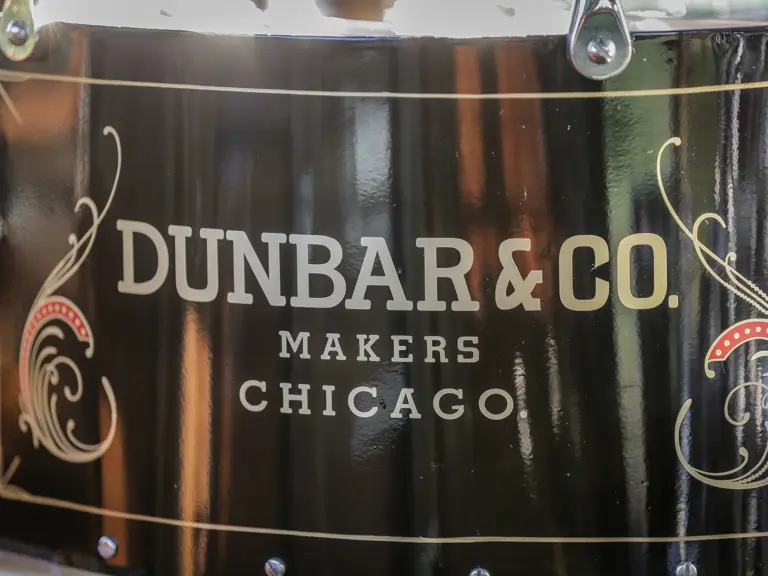
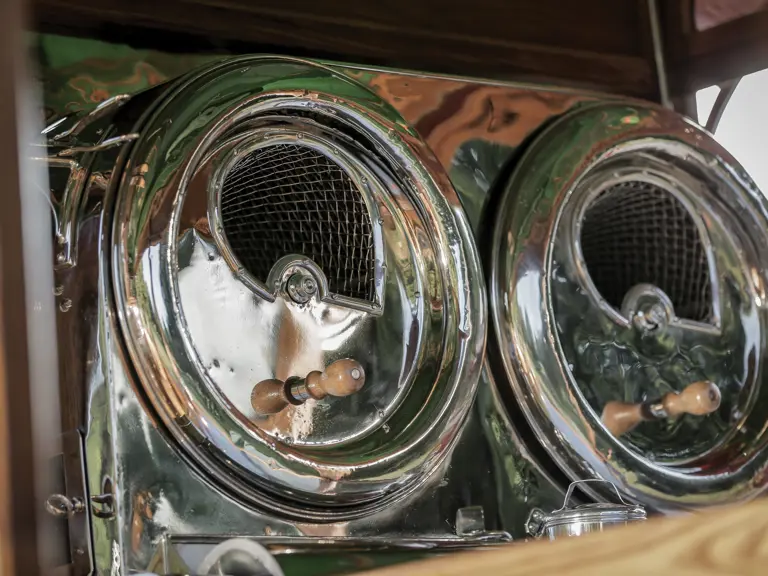
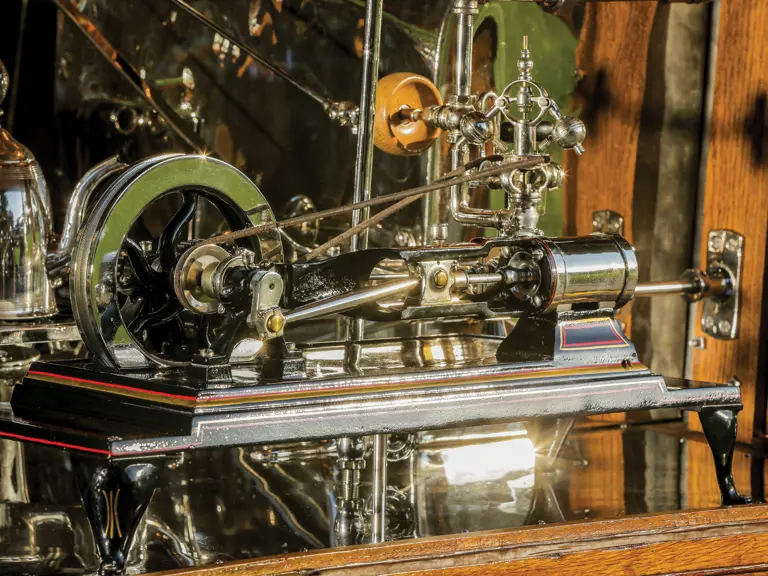

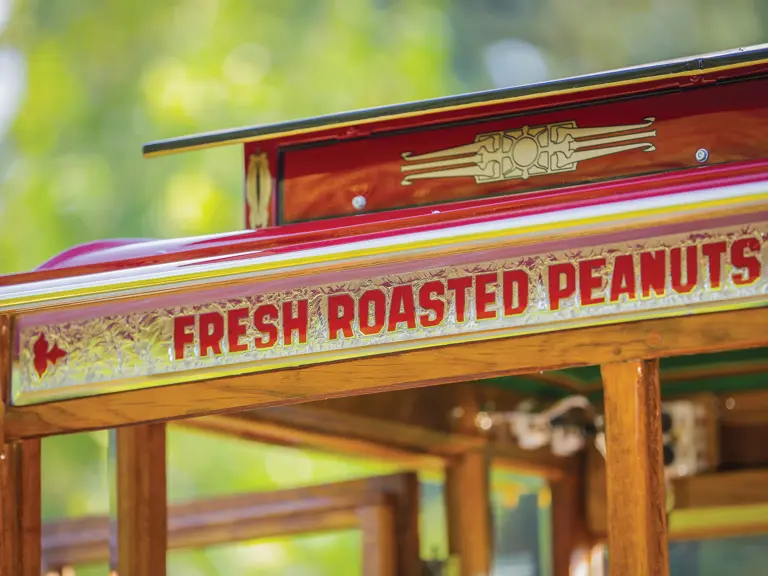




 | Hershey, Pennsylvania
| Hershey, Pennsylvania


